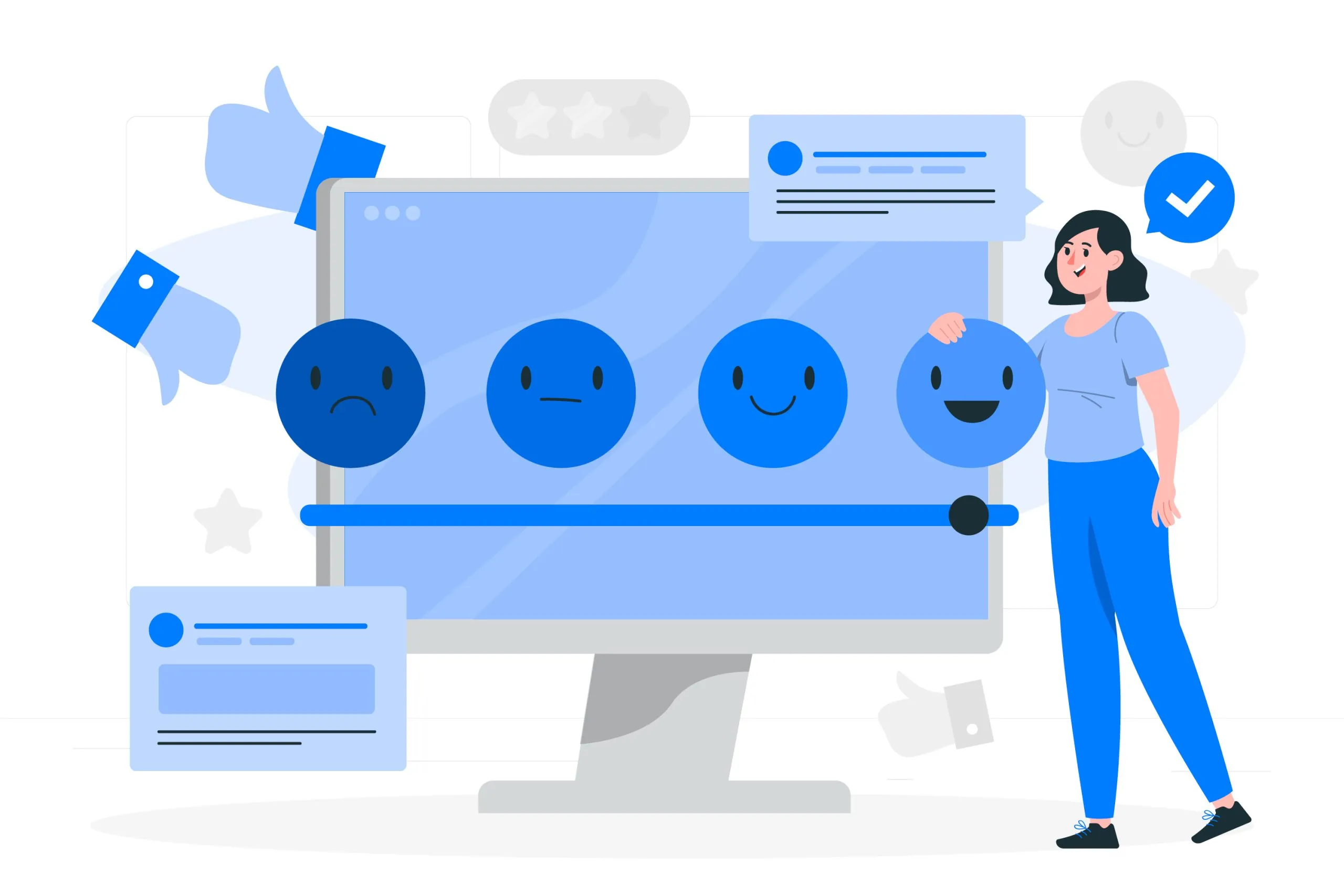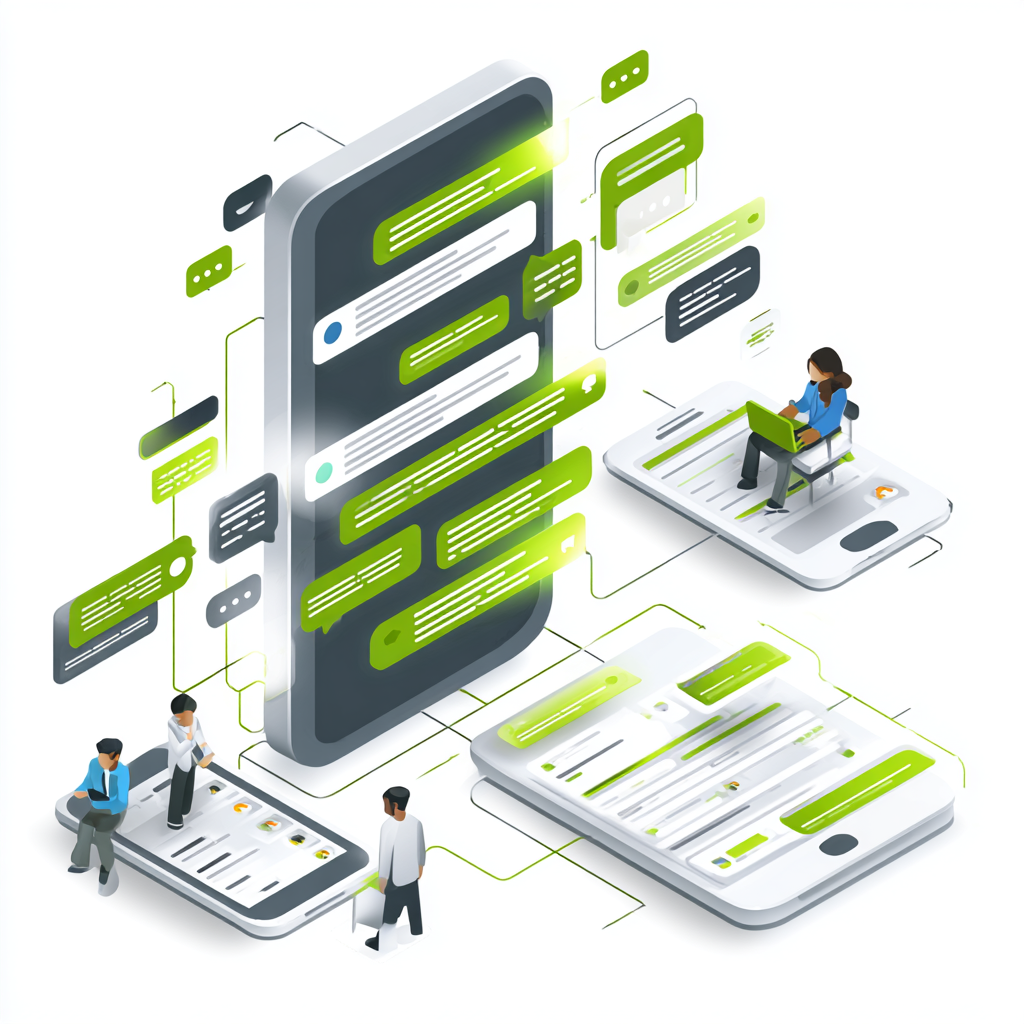Customer experience is crucial in building strong relationships and driving business growth. As technology advances and customer expectations rise, businesses must find effective ways to engage their audience across multiple communication channels. It has led to adopting of omnichannel vs. multichannel customer experience, both of which aim to enhance customer interactions but differ in execution and effectiveness. While a multichannel approach focuses on providing customers with multiple touchpoints, an omnichannel strategy integrates these channels into a seamless and consistent experience. Understanding the differences between omnichannel vs. multichannel customer experience approaches is essential for businesses looking to improve engagement, increase customer satisfaction, and stay ahead in a competitive market.
What is multichannel customer experience?
Multichannel customer experience is a strategy where a business engages customers through multiple communication channels, such as email, SMS, social media, websites, and phone calls.
Key characteristics of multichannel customer experience
A multichannel approach gives customers multiple ways to interact with a business, but these channels often operate independently.
- Multiple channels for customer interaction: Businesses engage customers through various platforms, such as phone, email, chat, and social media.
- Channels function separately, with little or no integration. Each platform works independently, meaning customer interactions on one channel do not carry over to another.
- Customers may receive different experiences depending on their channel. Since data is not shared across channels, customers might have to repeat information when switching platforms.
- Businesses can reach a wider audience by being available on different platforms. Multiple communication options allow businesses to engage customer segments based on their preferred channels.
Advantages
- Greater reach: Businesses can engage customers on their preferred platforms.
- Flexibility: Customers have multiple options to communicate with a company.
- Better marketing opportunities: Companies can use different promotions and customer engagement channels.
- Cost-effective: Businesses can start with individual channels without heavy investment in integration.
Challenges
- Lack of consistency: Customers may experience different levels of service across channels.
- Siloed data: Since channels are disconnected, businesses may struggle to track customer interactions across platforms.
- Repetitive customer experience: Customers might have to repeat their issues when switching channels (e.g., from email to phone support).
- Limited personalization: Businesses find it harder to tailor experiences based on customer history and preferences without integrated data.
What is omnichannel customer experience?
Omnichannel customer experience is a strategy where all communication channels are seamlessly integrated, allowing customers to switch between them without losing context. It provides a unified and consistent experience across multiple platforms, ensuring that customer interactions are connected and personalized.
Key characteristics
- Seamless integration of channels: All customer interactions are connected across platforms (e.g., email, SMS, website, social media, phone).
- Consistent experience: Customers receive the same quality of service regardless of the channel they use.
- Personalized engagement: Businesses use customer data to tailor interactions and recommendations.
- Real-time synchronization: Customer interactions update instantly across channels, so they do not have to repeat themselves.
Advantages
- Improved customer satisfaction: Customers enjoy a smooth, hassle-free experience across all touchpoints.
- Stronger brand loyalty: Consistent and personalized interactions help build trust and engagement.
- Efficient customer support: Support teams can access a unified view of customer interactions, reducing response times and frustration.
- Data-driven insights: Businesses can track and analyze customer behavior across multiple channels to improve their strategies.
Challenges
- Complex implementation: Integrating multiple channels requires advanced technology and strategic planning.
- Higher costs: Developing a seamless omnichannel experience often requires significant investment in software and infrastructure.
- Data management issues: Businesses must ensure customer data is synced and protected across all platforms.
- Continuous optimization needed: To maintain a smooth experience, businesses must regularly update and refine their omnichannel approach based on customer behavior and feedback.
4 Key differences between omnichannel vs. multichannel customer experience
While the omnichannel vs. multichannel customer experience approach involves engaging customers across various platforms, they differ significantly in integration, personalization, data management, and overall business impact.
1. Channel integration and consistency
- Multichannel: Each channel operates independently, meaning there is little to no connection between them. Customers may receive different information or service levels depending on their platform.
- Omnichannel: All channels are seamlessly integrated, ensuring a consistent experience across touchpoints. Customers can start an interaction on one channel and continue on another without losing context.
2. Customer journey and personalization
- Multichannel: Customer journeys are often fragmented because data is not shared across channels. Businesses struggle to personalize interactions as they lack a unified view of the customer.
- Omnichannel: With integrated data, businesses can track the entire customer journey across multiple channels, allowing for highly personalized experiences based on customer behavior and preferences.
3. Data synchronization and continuity
- Multichannel: Customer data is stored separately in each channel, leading to data silos. It makes it difficult to maintain continuity, as customers may need to repeat themselves when switching channels.
- Omnichannel: Data is synchronized in real-time across all channels, creating a single customer profile. It allows businesses to provide a smooth, uninterrupted experience regardless of where the customer engages.
4. Business impact and customer satisfaction
- Multichannel: While businesses can reach a wider audience, the lack of integration can lead to inconsistent experiences, resulting in customer frustration and lower retention rates.
- Omnichannel: A seamless and personalized approach improves customer satisfaction, increases loyalty, and drives higher revenue. Businesses that invest in omnichannel strategies often see stronger customer relationships and long-term growth.
Omnichannel vs. multichannel customer experience: Which approach is better?
The choice between a multichannel and omnichannel approach depends on a business’s goals, resources, and customer expectations. While both strategies have advantages, understanding when to use each can help businesses make the right decision.
When to use a multichannel approach
A multichannel approach is suitable for businesses that:
- Want to maximize reach: A multichannel approach allows businesses to connect with a broader audience if the goal is to be present on multiple platforms without full integration.
- Operate with limited resources: Smaller businesses or startups with budget constraints may find it easier to manage independent communication channels without investing in full integration.
- Prioritize separate marketing and support functions: If marketing, sales, and customer service teams operate independently, a multichannel strategy allows each team to manage its channels separately.
- Relying on transactional interactions: A multichannel approach may be sufficient if customer interactions are simple and do not require continuity across platforms.
When to adopt an omnichannel strategy
An omnichannel approach is ideal for businesses that:
- Want to enhance customer experience: If customer satisfaction and seamless interactions are a priority, omnichannel provides a frictionless experience across platforms.
- Operates in industries where personalization is key: E-commerce, banking, retail, and healthcare benefit significantly from personalized interactions that follow the customer across multiple channels.
- Have the resources to invest in integration: Businesses willing to invest in CRM systems, data synchronization, and automation tools can maximize the benefits of omnichannel engagement.
- Focus on long-term customer loyalty: An omnichannel strategy builds stronger relationships by ensuring consistency and personalization, increasing customer retention.
Factors businesses should consider
When choosing between a multichannel or omnichannel strategy, there are a few things to keep in mind:
- What your customers expect: Consider how your customers engage with your brand. Are they looking for a smooth, consistent experience across different platforms, or do they want the option to reach you on whichever channel they prefer?
- Your budget and resources: Implementing an omnichannel strategy can require significant investment in technology and systems. A multichannel approach might be a more practical starting point if you work with a tighter budget or a smaller team.
- Growth and scalability: Consider your business’s future. Will your current setup work as you expand? Omnichannel strategies are more straightforward to scale in the long run, while multichannel systems may require more work to keep up with growing customer expectations.
- The complexity of customer interactions: If your customers need to switch between platforms during their journey from social media to support tickets or a phone call, then omnichannel will serve them better. If their interactions are more straightforward, multichannel might be enough.
- Tech capabilities: Do you have the infrastructure to manage and sync customer data across multiple channels? Omnichannel requires more technical work up front, but it can make life easier as you scale.
- Staying competitive: Finally, think about your competitors. Are they offering a seamless, integrated experience across channels, or are there gaps in their approach that you can exploit? Understanding where you stand can help guide your decision.
Why omnichannel is the future of customer experience
Delivering an exceptional customer experience is essential for building long-term loyalty in today’s competitive market. While both multichannel and omnichannel strategies provide ways to engage customers, omnichannel stands out as the superior approach for creating a seamless and personalized journey. By integrating all communication channels into a unified system, omnichannel ensures that customers enjoy a consistent and uninterrupted experience across platforms. This level of integration boosts customer satisfaction and strengthens brand loyalty, as customers feel recognized and valued every time they interact with your business, regardless of the channel they choose.





